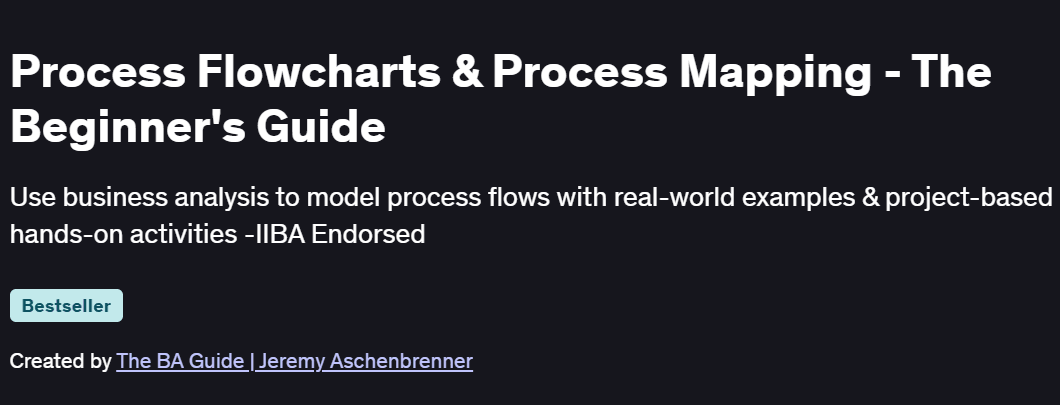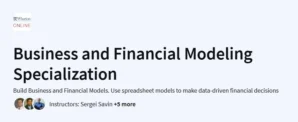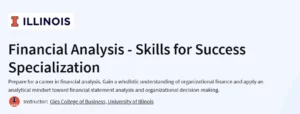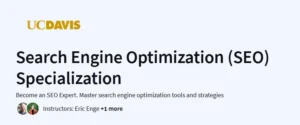What you will learn in Process Flowcharts & Process Mapping – The Beginner’s Guide Course
- Learners will understand the importance of process mapping in visualizing workflows and identifying areas for improvement.
- The course covers various types of process flowcharts, including basic flowcharts, swimlane diagrams, and value stream maps.
- Students will explore how to use flowcharting techniques to analyze processes, eliminate inefficiencies, and optimize workflows.
The course teaches the symbols, standards, and best practices for creating clear, effective process flowcharts that communicate ideas efficiently.
Learners will gain hands-on experience in mapping processes and creating flowcharts for real-world applications in business.
Program Overview
Introduction to Process Mapping
⏳ 2-4 weeks
Understand the basics of process mapping and its significance in business process management.
Learn about different types of process maps and flowcharts, and when to use each type.
Explore how process mapping helps in visualizing processes for better decision-making and optimization.
Process Flowcharting Basics
⏳ 4-6 weeks
Study the key symbols used in flowcharting, such as ovals, rectangles, diamonds, and arrows, and their meanings.
Learn the standard flowcharting rules and conventions to ensure clarity and consistency in your diagrams.
Understand the structure of a flowchart, including start and end points, decision points, and process steps.
Creating Basic Process Flowcharts
⏳ 4-6 weeks
Learn how to create simple flowcharts for everyday business processes, such as order fulfillment, customer support, and product development.
Explore the process of defining process boundaries, identifying stakeholders, and mapping key actions within the workflow.
Understand how to use flowcharts to visualize and simplify complex processes.
Advanced Flowcharting Techniques
⏳ 6-8 weeks
- Learn how to create more advanced process flowcharts, such as swimlane diagrams and value stream maps, to represent more complex workflows.
- Explore how to map cross-functional processes and interactions between different teams using swimlanes.
- Study how value stream mapping helps identify waste and inefficiencies in processes and leads to process improvements.
Process Improvement & Optimization
⏳ 4-6 weeks
- Understand how to use process maps and flowcharts to identify bottlenecks, inefficiencies, and areas for improvement.
- Learn strategies for redesigning processes to eliminate waste, reduce cycle times, and increase efficiency.
- Study how to implement continuous improvement processes like Kaizen in your workflows.
Final Project: Create a Process Map
⏳ 6-8 weeks
- Apply the concepts learned throughout the course to map a real-world process from start to finish.
- Create a comprehensive process flowchart, identifying inefficiencies and proposing improvements.
- Present your process map for feedback and improvement suggestions.
Get certificate
Job Outlook
Process mapping and flowcharting are valuable skills in industries like manufacturing, healthcare, IT, and logistics.
Professionals skilled in process mapping and process improvement can expect roles such as process analyst, business analyst, and operations manager, with entry-level salaries ranging from $50K to $75K.
Process improvement professionals with expertise in flowcharting can earn $90K to $120K+ in senior positions, depending on experience.
Specification: Process Flowcharts & Process Mapping – The Beginner’s Guide
|
FAQs
- No prior experience is required; the course is beginner-friendly.
- Introduces basic concepts and gradually builds to mapping techniques.
- Focuses on practical applications suitable for any industry.
- Learning can start immediately with simple examples and exercises.
- Basic flowcharts can be created with free tools like Lucidchart, Draw.io, or even PowerPoint.
- Professional mapping may use Visio or specialized BPM software.
- Understanding the symbols and logic is more important than the software itself.
- Many tools offer templates to simplify the process.
- Yes, it clarifies responsibilities and workflow steps.
- Helps identify bottlenecks, redundancies, and inefficiencies.
- Facilitates better communication within teams.
- Serves as a reference for training new employees.
- Include enough detail to clearly understand steps and decision points.
- Avoid overcomplicating with unnecessary minutiae.
- Tailor complexity to the audience (team members, management, or external stakeholders).
- Iteratively refine charts as processes evolve.
- Yes, they are useful for personal productivity, project planning, and education.
- Can map everyday processes like household tasks, study schedules, or event planning.
- Helps visualize steps and identify improvements in any workflow.
- Encourages structured thinking and problem-solving skills.





